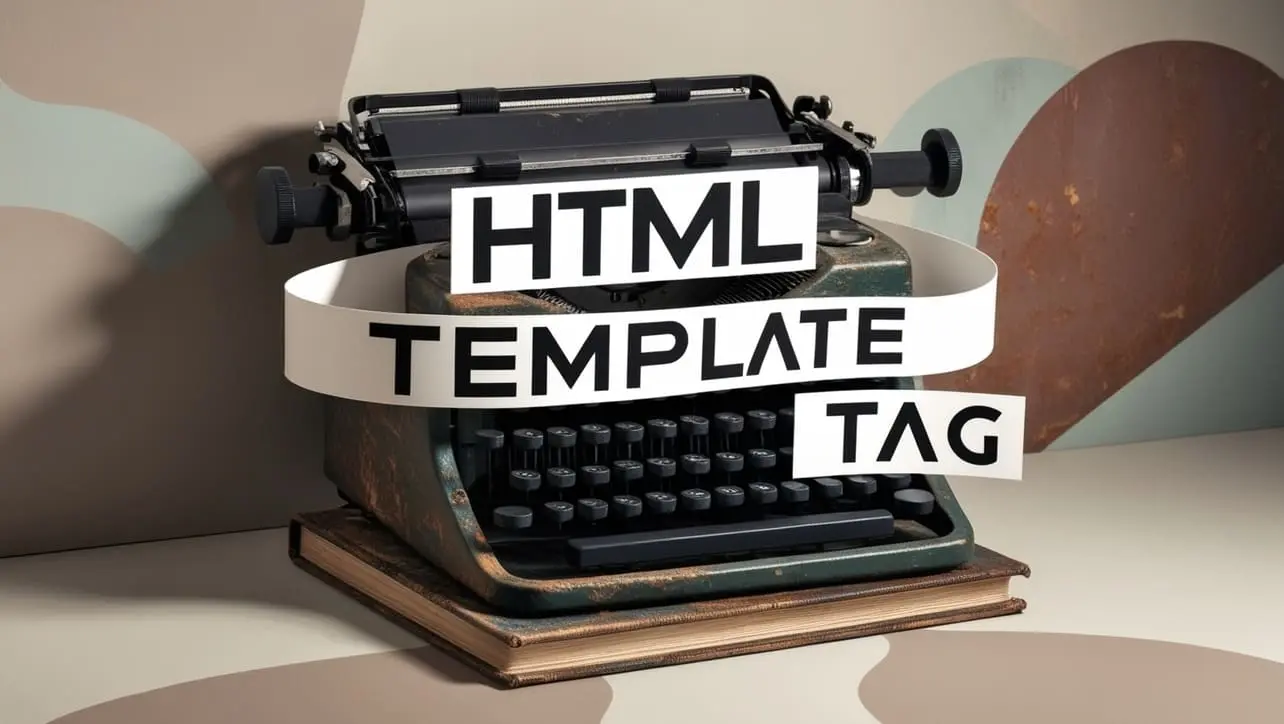
HTML Topics
- HTML Intro
- HTML Basic
- HTML Editors
- HTML CSS
- HTML Tags
- <!--...-->
- <!DOCTYPE>
- <a>
- <abbr>
- <address>
- <area>
- <article>
- <aside>
- <audio>
- <b>
- <base>
- <bdi>
- <bdo>
- <bgsound>
- <blink>
- <blockquote>
- <body>
- <br>
- <button>
- <canvas>
- <caption>
- <cite>
- <code>
- <col>
- <colgroup>
- <data>
- <datalist>
- <dd>
- <del>
- <details>
- <dfn>
- <dialog>
- <div>
- <dl>
- <dt>
- <em>
- <embed>
- <fieldset>
- <figcaption>
- <figure>
- <footer>
- <form>
- <h1> to <h6>
- <head>
- <header>
- <hgroup>
- <hr>
- <html>
- <i>
- <iframe>
- <img>
- <input>
- <ins>
- <kbd>
- <label>
- <legend>
- <li>
- <link>
- <main>
- <map>
- <mark>
- <menu>
- <meta>
- <meter>
- <nav>
- <noscript>
- <object>
- <ol>
- <optgroup>
- <option>
- <output>
- <p>
- <param>
- <picture>
- <pre>
- <progress>
- <q>
- <rp>
- <rt>
- <ruby>
- <s>
- <samp>
- <script>
- <search>
- <section>
- <select>
- <small>
- <source>
- <span>
- <strong>
- <style>
- <sub>
- <summary>
- <sup>
- <svg>
- <table>
- <tbody>
- <td>
- <template>
- <textarea>
- <tfoot>
- <th>
- <thead>
- <time>
- <title>
- <tr>
- <track>
- <u>
- <ul>
- <var>
- <video>
- <wbr>
- HTML Deprecated Tags
- HTML Events
- HTML Event Attributes
- HTML Global Attributes
- HTML Attributes
- HTML Comments
- HTML Entity
- HTML Head
- HTML Form
- HTML IndexedDB
- HTML Drag & Drop
- HTML Geolocation
- HTML Canvas
- HTML Status Code
- HTML Language Code
- HTML Country Code
- HTML Charset
- MIME Types
HTML template Tag

Photo Credit to CodeToFun
🙋 Introduction
In the dynamic landscape of web development, the <template> tag stands as a powerful tool for encapsulating reusable content.
This guide aims to provide a comprehensive understanding of the HTML <template> tag and how to harness its potential.
🤔 What is <template> Tag?
The <template> tag is an HTML element that allows you to declare fragments of markup that can be cloned and inserted into the document later through JavaScript. It serves as a hidden container for holding client-side content that remains inert until activated.
💡 Syntax
To employ the <template> tag, use the opening <template> tag followed by your content and close it with the </template> tag.
<template>
<!-- Your reusable content here -->
</template>🧰 Attributes
The <template> tag supports the id attribute, allowing you to uniquely identify a template for later reference in your JavaScript.
<template id="myTemplate">
<!-- Your template content here -->
</template>▶️ Activation via JavaScript
The true power of the <template> tag comes to life when activated through JavaScript. The content inside a <template> tag can be cloned and inserted into the document as needed.
<script>
// JavaScript code to activate the template
const template = document.querySelector('template');
const clone = document.importNode(template.content, true);
document.body.appendChild(clone);
</script>📚 Common Use Cases
Reusable Components:
The
<template>tag is ideal for defining reusable components or fragments of content that you can easily clone and insert where needed.reusable-components.htmlCopied<template> <div class="card"> <h2>Title</h2> <p>Description goes here.</p> </div> </template>Conditional Content:
Use the
<template>tag to store content that may be conditionally added to the document based on user interactions or other dynamic factors.conditional-content.htmlCopied<template id="conditionalContent"> <p>This content appears conditionally.</p> </template>
🖥️ Browser Support
Understanding the compatibility of the <template> tag across different browsers is essential for delivering a consistent user experience. Here's an overview of its support:
- Google Chrome: Fully supported.
- Mozilla Firefox: Fully supported.
- Microsoft Edge: Fully supported.
- Safari: Fully supported.
- Opera: Fully supported.
- Internet Explorer: Partial support (version 11 and later).
Ensure you test your code in various browsers to guarantee a seamless experience for your audience.
🏆 Best Practices
- Inert Content: Keep in mind that content within a
<template>tag is inert by default, meaning it won't be rendered until activated. - Script Type: If you include scripts inside a
<template>, use the type="text/html" attribute to prevent browsers from executing them.
🎉 Conclusion
The <template> tag is a valuable asset in a developer's toolkit, offering a clean and efficient way to manage reusable content in web applications. By mastering its implementation, you can enhance code maintainability and improve the overall user experience.
👨💻 Join our Community:
Author

For over eight years, I worked as a full-stack web developer. Now, I have chosen my profession as a full-time blogger at codetofun.com.
Buy me a coffee to make codetofun.com free for everyone.
Buy me a Coffee












If you have any doubts regarding this article (HTML template Tag), please comment here. I will help you immediately.